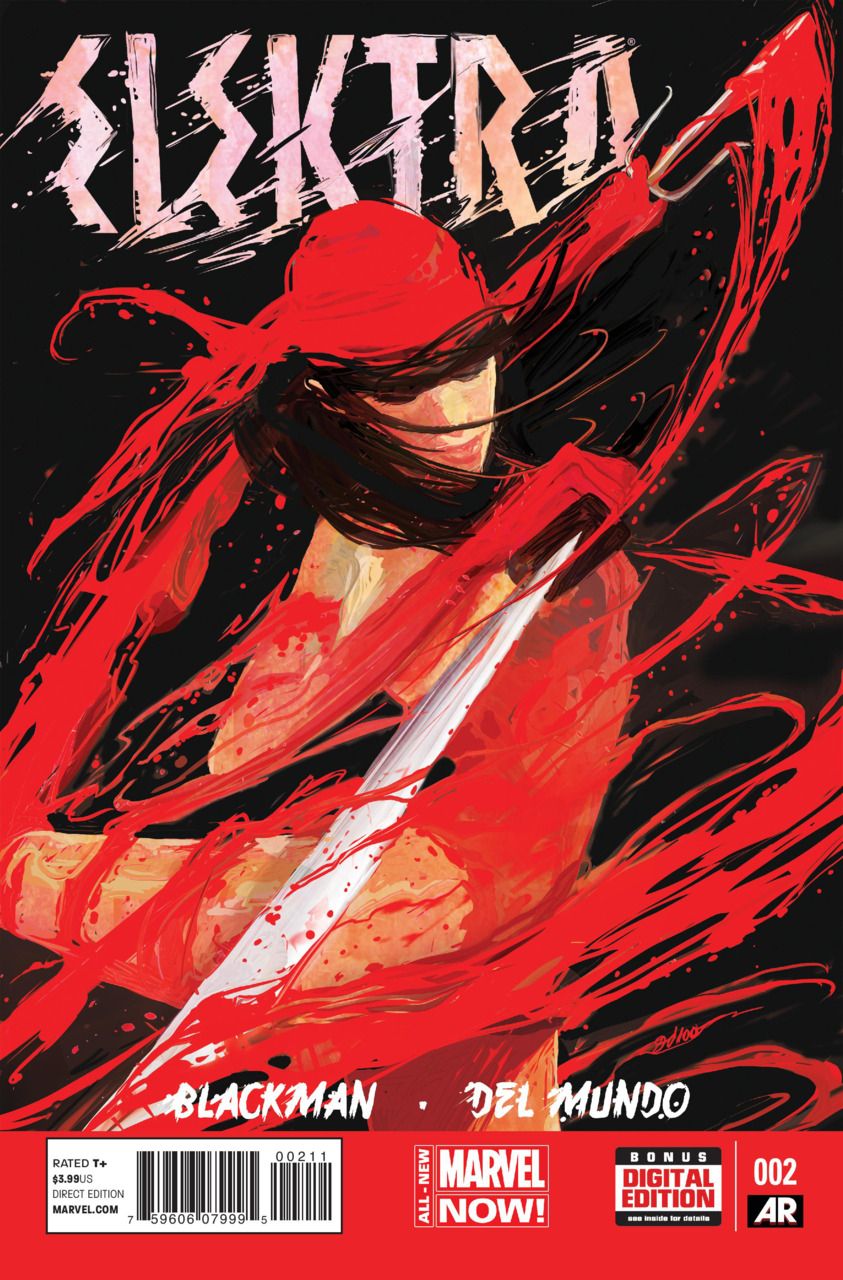W. Haden Blackman and Mike Del Mundo's "Elektra" #2 is even more visually stunning than the first issue, including a fight scene that feels like a perfectly composed ballet with deadly blades. Beyond the visuals however, Blackman still needs to find a way to let Elektra own this book instead of being relegated to a bit player in her own title.
Though what Blackman is doing is solid and issue #2 is much improved from #1, there's still not enough Elektra in "Elektra." Elektra is on about 12 out of 20 pages, and it still feels a bit like the missteps from the "Red She-Hulk" series, where Red She-Hulk felt like a tourist in her own book. Elektra has more ownership of this series than Red She-Hulk did in hers, but it still falls short of really capturing her voice and agency.
All that said, Blackman has done a tremendous job with Elektra's primary antagonist, a mysterious hooded figure that can absorb the powers, memories and knowledge of those he devours. It might not be the most original of concepts but Blackman has set it up well and created a worthy adversary for Elektra -- one that has gotten a taste of Elektra's blood and will not be sated until he again tastes the incredible power she possesses.
Del Mundo is the beating heart of this book. Elektra has had some truly awful series over the years, but any fan of the character holds the 1980s Frank Miller and Bill Sienkiewicz mini-series on a pedestal, one it well earned with its innovation, especially on the visual front. Stepping into Sienkiewicz's genius shoes for a new series featuring a character that he put an indelible mark on has got to be intimidating, but Marvel was smart to pick Del Mundo and readers are lucky that he accepted the challenge. Del Mundo's style and choices are utterly different than what Sienkiewicz did and yet they feel respectful and inclusive of what came before. Del Mundo's fully painted pages are magnificent -- they're less challenging from a reader perspective than Sienkiewicz's work and probably less obviously innovative in some ways -- but they're stunning to behold and strong enough to stand on their own in creating something new and yet lasting for Elektra. Del Mundo's design for Elektra's new nemesis is especially terrifying and gorgeous; wonderfully graphic and unique to even Elektra's bizarre world while still feeling perfectly in sync visually with the book's tone.
Del Mundo's storytelling is fluid and gorgeous. His compositions are effortless in the way they almost drift absentmindedly through panels that happen to be there. It's almost as if a panel just happened to catch a fragment of a moment, rather than a panel feeling like a static composed image. It's especially true in his action scenes, which feel, appropriately, like dancing as much as anything else. Elektra's fight with Lady Bullseye, though it is only a few pages, is a force to be reckoned with and yet it still manages to make clear that Lady Bullseye is no match for Elektra.
The colors, also by Del Mundo, have a soft pretty look -- almost at odds with the subject material of death, violence, and horror -- which creates an odd synergy that works in the book's favor. The book is also populated by sudden dark stabs of black -- a sharp silhouette, the gaping maw of an enemy, the shadowed true face of Elektra's adversary -- all of which are also at odds with the beautiful atmospheric coloring, but a powerful reminder of the kind of book presented.
All in all, while there are still some rough edges to be worked out (most notably, Elektra being allowed to take real ownership of the title), Del Mundo's visuals are magnificent, and exactly the follow up that a character of this caliber has deserved for a very long time. It took nearly 30 years, but finally a new "Elektra" title has a chance at stepping out of the shadows of "Elektra: Assassin" and breathing fascinating new life into the character.

